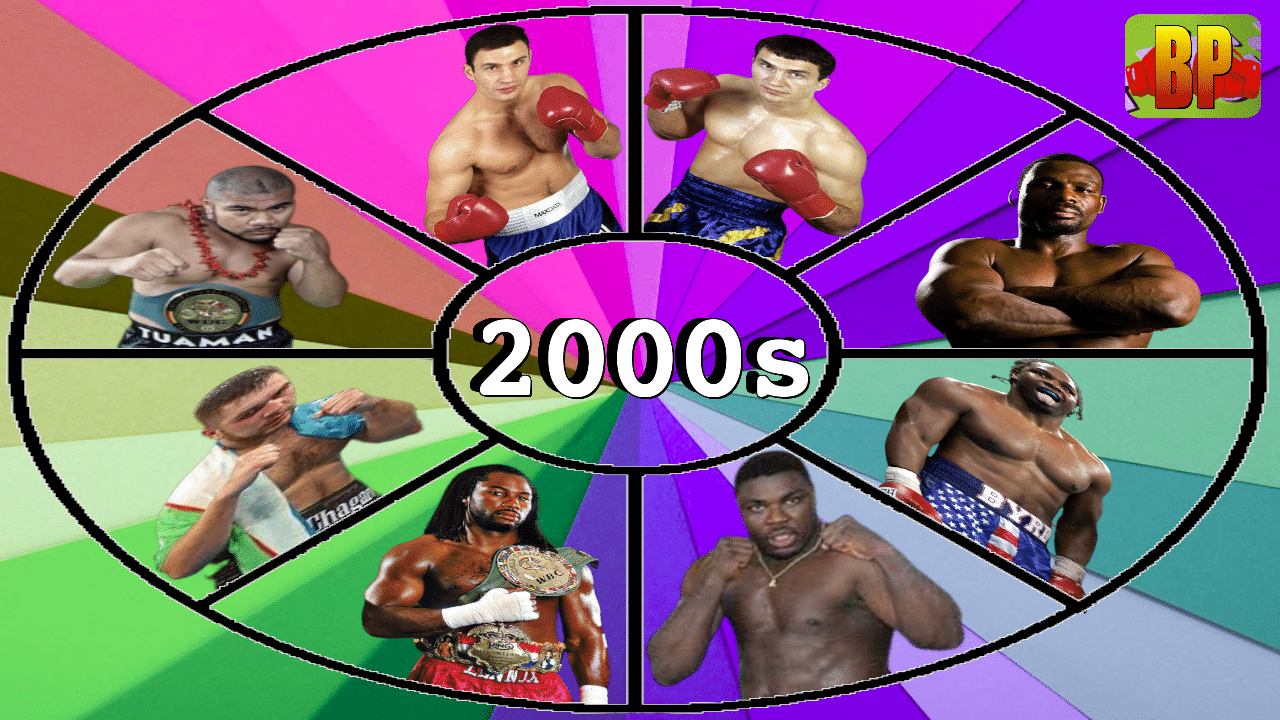The often maligned 2000s heavyweight division is finally up for study and survey. Recall that the 1980s heavyweight division is known as the Lost Generation and was seen as a step-down in quality from the Golden Age 1970s. The emergence of the 2000s, 20 years later, may cause you to think over again how you’d classify the 80s.
The decade opened off the heels of the Silver Age crowning an undisputed heavyweight champion, the first since 1992. Lennox Lewis forged his name as the best of the heavyweights but would have to contend with the rising crop of youngsters who were looking to make their name in a new decade. The two with the highest expectations were, ironically enough, blood brothers.

The Klitschko Brothers (or KlitschBros), Wladimir and Vitali, were super heavyweights in the size and vein of the champion Lennox Lewis and his would-be rival Riddick Bowe. Wlad was upset back in the 90s but has since returned to form with a winning streak. Vitali entered the 2000s as the WBO Titleist with some defenses under his belt.
How about the rest? As far as youngsters go, we’ve got Shannon Briggs, John Ruiz, David Tua, Chris Byrd, Hasim Rahman, Andrew Golota, and more to emerge with time. Older faces like Mike Tyson and Evander Holyfield remained with more to emerge in their own right (whether you can believe that or not).
Michael Moorer and Ray Mercer were two names from the 90s that would return to the warzone of the marquee division. Then there’s lower-weight class fighters who ascended to take their shot at heavyweight. It’s been a while since Michael Spinks proved it was possible and there are more looking to do so in the 2000s. So the roster seems fine and the title scene appears unified; what could go so wrong to paint this as the arguable worst time in heavyweight history?
To open the show, John Ruiz’s claim at a WBA title shot led to the stripping of Lennox Lewis, and the turmoil would only increase from there. The remaining pieces of Lewis’s title would be snatched from him over the remainder of his reign. Those individual pieces (the lineage, RING recognition, WBC, and IBF titles) would undergo their own confusing routes, bouncing from name to name in hot potato situations you should be familiar with from the 80s. Then there’s the newly significant WBO title; it wasn’t any different. Making things infinitely worse was that the splintered title scene didn’t see many of the fights that made sense come to fruition.
Fight fans desire to see the best fight the best but this crop appeared allergic to this. The most famous example was the declaration that the KlitschBros would never fight because of a promise they made to their mother. Honestly, this is the only acceptable clause from this decade as to why two fighters would not face one another. The rest have no excuse. Still, can you imagine if they DID fight? Who would you take in a battle between the peak forms of Vitali and Wladimir?
There are some shocks, some heartbreak, and a slew of disappointments if you’re expecting the best of times, like in the ’70s or ’90s. Maybe, just maybe, this decade is a hidden gem on its own, right? I leave that individual question to you. Still, the journeys of Lennox Lewis, Wladimir Klitschko, Vitali Klitschko, and more are worth telling; I don’t believe you’ll be disappointed in this revisiting of a now 20-year-old decade we can reflect on in its entirety. We have a new lens now, no longer tainted by being prisoners of the moment. Was it good, or was it bad? That’s your choice.
This is a timeline of the 2000s heavyweight boxing division, the story of two brothers stitching together their legacies in a questionable era while never having to lift a fist at one another. It’s certainly an interesting ride, considering how much confusion there was around the title scene. I’ve cleared that up for you here; no more questions. From my heart to yours, this has been TheCharlesJackson, author of the Boxing Encyclopedia. Stay frosty, God bless, and don’t forget to subscribe on YouTube!
